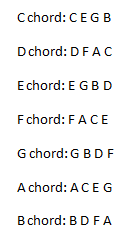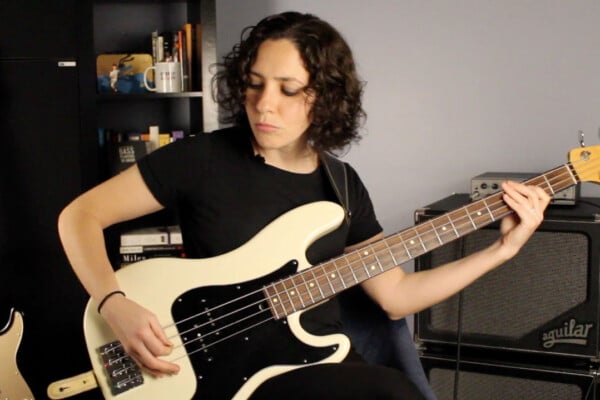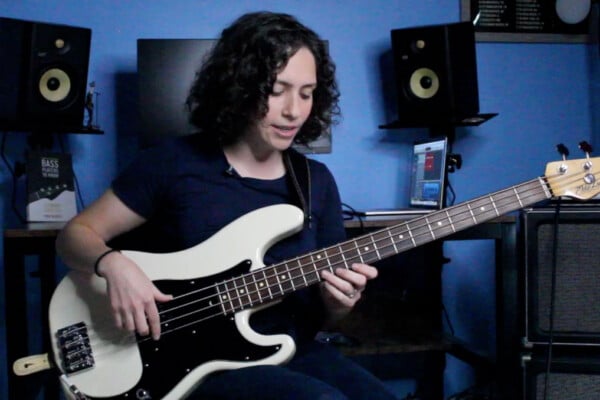How To Harmonize Melodies
At some point in your musical career you are bound to be given a melody line… and nothing else. Maybe it’s one you have created, it might just be an idea someone else is working, or perhaps it’s the melody to a standard you have to learn on the bandstand. Regardless of the circumstances the bottom line is that you have a single line of notes and need to create or determine the underlying chord structure. Welcome to the art of harmonizing music. In this lesson we’ll explore the basic foundation of harmonizing melody – these are concepts that you can broaden on your own and apply to increasingly sophisticated songs. Eventually you should be able to do this all by ear – but just like everything else that will take a lot of dedicated practice.
First we need to lay out some basic ground rules for song structure. Keep in mind that this is a beginner’s guide to harmony. These “ground rules” apply to basic songs which follow conventional structures and will not be applicable to every song (and thank goodness for that!). Also there are no hard-and-fast rules for harmonization, it is all at your ear’s discretion. These are meant to give you a starting place.
1. The first and final chords in a song (not including a turn-around) are almost always the I chord – the root (major or minor). Frequently the preceding chord is the V7, though you will also see the IV chord. The V7 provides a strong resolution to the I. In jazz you will often see ii-V-I progressions in the chord harmony.
2. The melody notes most often harmonized normally occur on accented beats. Beats 1 and 3 in a 4/4 time signature are the strong beats, though the melody can accent any beat. Often times the harmony will follow the rhythm of the melody, and an accented note gets even more oomph from a corresponding chord change.
3. The melody note that is harmonized is usually also part of the harmonizing chord. This is your choice – if there are multiple chords that could work, pick the one you like the best.
4. Motifs in the melody (or similar phrases) are normally harmonized in the same way.
Now that we have our basic guidelines let’s put together some harmonies! We need to know a few things about the melody line we’re working with before we begin. First, what is the key of the melody? Knowing the key centers us and helps guide chord choices. If you don’t know the key and cannot figure it out a good guess would be the last note of the melody. After you know the key make a chord chart of all the available harmonies you can make from each note. For example, if we were working in the key of C our possible chords would be:

Figure 1: Major Chord Options in C
Each of these chords has different qualities, and any single note could be present in four different chords. For our purposes we’ll really focus on the I, IV and V7 chords – in this example that would be the chords built off of C, F and G.
Now you could harmonize every single note in the melody, but then it would just be a chordal melody. You should decide which beats you want to focus on for your harmonization and allow for occasional exceptions. For instance I may choose to harmonize on beats 1 and 3 in a 4/4 song with exceptions for accented notes. This way the melody can move freely over the foundation the harmony provides. When you’re analyzing your melody write down the possible chords that could go with each melody note. Remember the chord should contain the melody note. If more than one choice exists, choose the one that you think sounds better.
Let’s take a simple melody as an example – the last four bars of “Twinkle Twinkle Little Star.” The melody notes are as follows in the key of C major:
C C G G | A A G | F F E E | D D C |
Given the notes available in the melody we could harmonize on beats 1 and three sticking to I, IV and V7 chords. One possible harmonization would be the following (if the chords change on beats 1 and beats 3):
I I | IV I | V7 I | V7 I |
Cmaj Cmaj | Fmaj Cmaj | Gmaj7 Cmaj | Gmaj7 Cmaj |
Did you notice that I left off the sevenths on the Cmaj and Fmaj chords? Adding the seventh is fine if you like the sound, but for the basic structure the simple triad is fine.
I want to reiterate that this is a foundational exercise to understanding the basic guidelines for harmonizing a melody. Now that you have the foundation, pick out a few melodies that you like and start to add different chord voicings. Experiment with inversions, adding sevenths and alterations, and using different types of rhythm in your harmonization. You’ve got the groundwork to start making some interesting songs.
As an exercise take all the classic songs – “The Alphabet Song,” “Mary Had A Little Lamb,” “Three Blind Mice,” “Row Row Row Your Boat,” etc and create harmonies for each of them . Some of these songs should be so ingrained in your long-term memory that you won’t have to think much about the melody. Also because you can think of the melodies so quickly (and accurately) they make a great reference of comparisons for intervals e.g. need to sing a perfect fifth? Use the first jump in “Twinkle Twinkle.” Once you have the basics to harmonization down you can really expand. Try different chord voicings on the bass – or any other instrument – and work out concurrent melodies/chords for some awesome solo bass arrangements. Once you are comfortable with the writing out harmonizations see if you can do it by ear – or even better, play the harmonized chords while you sing the melody.




In harmonizing Twinkle Twinkle, the V7 chord is obviously G7 not Gmaj7 as written. These simple errors can hamper a beginners study of theory. More attention should be paid to proof reading text before it is posted
I absolutely agree with the other comment I’ve been trying to figure that stupid Gmaj7 for half an hour – I would have been really confused if Kevin hadn’t posted! What’s the point of posting at all if you can’t be bothered to check? You are hindering not helping!
James,there’s no one above mistake,let’s learn to encourage people.Evan did a good job to teach beginner some basics of harmony.Good effort.
i like it
kevin you ar correct!
[…] you will already know how to make the I, or the V7 chord with melodies. Check out this link here for 4 steps and some basic […]
[…] you know how to sing harmony? There are ways to learn it, improve upon it, and expand your ability to harmonize with other musicians. The same goes for […]